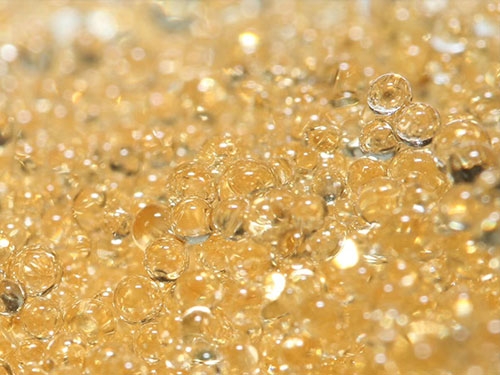成都森格尔环保科技有限公司
Chengdu senge environmental protection technology co.LTD
Consultation Hotline:02865357899
Production, Sales and Development of Ion Exchange Resin
成都森格尔环保科技有限公司
Chengdu senge environmental protection technology co.LTD
Consultation Hotline:02865357899
Production, Sales and Development of Ion Exchange Resin
Contact person: Manager Liu
Location: 028-65357899
Mobile phone: 15680686111
Mailbox: chengdu@sgrhb.com
Fax: 028-65357899
Email: chinaresin@sgrhb.com
Website: www.sgrhb.com
Website : en.sgrhb.com
Address: 79 Jiujin Street, Wuhou District, Chengdu City, Sichuan Province
With the rapid development of modern organic synthesis technology, various ion exchange resins with excellent properties have been developed, and many new application methods have been developed. It is widely used in many industries, especially in high-tech industries and scientific research fields. In recent years, hundreds of resins have been produced at home and abroad, with an annual output of hundreds of thousands of tons.

1) Storage and transportation
1) The storage temperature of deionized water resin should be between 5 and 40 C. Ion exchange resins should be stored in sealed containers to avoid cold or exposure. In the absence of antifreeze in winter, the resin can be stored in brine, and the concentration of brine can be determined by temperature. Once the resin is frozen, do not suddenly transfer to the high temperature environment, the low temperature environment should be 5-10 degrees Celsius, let it thaw slowly.
2) Ion exchange resin contains a certain amount of water, which should be maintained during storage, transportation and use. If the resin is dehydrated, soak it in concentrated brine (about 10%) and then dilute it gradually. Do not add water directly to prevent the resin from expanding and breaking rapidly.
3) In long-term storage, the strong resin should be changed to salt type, the weak resin should be changed to hydrogen type or free alkali type, and then soaked in clear water. Ion exchange resins can be divided into styrene resin and acrylic resin according to their matrix types. The main properties and types of resins are determined by the types of chemical active groups in resins. Firstly, it can be divided into cationic resins and anionic resins, which can exchange ions with cations and anions in solution respectively. Cationic resins can be divided into strong acidity and weak acidity. Anionic resins can be divided into strong alkalinity and weak alkalinity.
The storage life of 4 resins is 2 years.
5) In the process of use, storage and transportation, the resin should be strictly prevented from being polluted by organic oil. Industrial production
Ion exchange resins usually contain excessive solvents, oligomers and other impurities that must be removed. Otherwise, the exchange effect and the quality of effluent will be affected. Therefore, the new resin must be pretreated. Ion exchange resin is composed of classification name, skeleton (or gene) name and basic name. The pore structure is divided into two types: gel type and large pore type. All macroporous resins with physical pore structure are added "big hole" before the full name. If the classification is acidic, the word "yang" should be added before the name, while the classification is alkaline, and the word "yin" should be added before the name. Such as: macroporous strong acidic styrene cation exchange resin. Conversion of resin into ionic type can improve the stability of resin and play the role of activating resin. (+-*/} 6) Anionic resin pretreatment: After rinsing the resin with water, soak it in 2-4% NaOH for 4-8 hours, then wash it to neutral, then soak it in 5% hydrochloric acid for 4-8 hours. Rinse with water until pH 6, then use. (+*/} 7) Anionic resin pretreatment: rinse the resin with water, soak it with 5% hydrochloric acid for 4-8 hours, wash it with water until pH 6, 4-8 hours, and soak it with 2-4% NaOH for 4-8 hours. Rinse with water until pH 7-9, then use. D 301-III and D301 weak alkali resins.
8 pretreatment: soak in warm water for 4-8 hours, wash in pH 6 for 4-8 hours, and soak in 2-4% NaOH for 4-8 hours. It can be used for secondary treatment.
9) Pharmaceutical and food industries, please treat the resin according to special requirements.
10) Users can convert resins into desired ion types according to different application processes. ion exchange resin
Long-term use is vulnerable to suspended solids, colloidal substances, organic matter, bacteria, algae, iron and manganese pollution, resulting in the decline or even loss of ion exchange capacity. Ion exchange resin is composed of classification name, skeleton (or gene) name and basic name. The pore structure is divided into two types: gel type and large pore type. All macroporous resins with physical pore structure are added "big hole" before the full name. If the classification is acidic, the word "yang" should be added before the name, while the classification is alkaline, and the word "yin" should be added before the name. Such as: macroporous strong acidic styrene cation exchange resin. Therefore, it is necessary to activate the resin irregularly according to the situation. The activation method can be determined according to the pollution conditions. Ordinary cationic resins are easily polluted by Fe3+ during softening process and can be diluted by hydrochloric acid after soaking. Anionic resins are vulnerable to organic contamination and can be immersed or eluted in 10% NaCl + 2-5% NaOH mixed solution. If necessary, it can be immersed in 1% hydrogen peroxide solution for a few minutes or treated by acid-base alternation, bleaching, alcohol treatment and various sterilization methods.
Chengdu Senger Environmental Technology Co., Ltd.
Record No: 蜀ICP备19000327号
Powered by Xiangyun Platform
Contact person: Manager Liu
Location: 028-65357899
Mobile phone: 15680686111
Email: chinaresin@sgrhb.com

